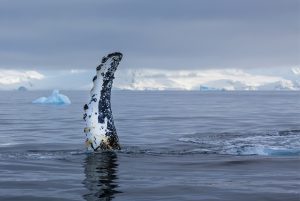Protecting 30 by 30: that’s the goal. Canada aims to safeguard 30 per cent of its oceans by 2030 to reverse biodiversity loss, protect ecosystems and ensure resilience against warming and acidification. But how can we conserve something as dynamic, deep, multi dimensional and diverse as the ocean?
Globally, marine protected areas are considered an effective tool in ocean conservation. There are 14 in Canada protected under the federal Oceans Act, in addition to national marine conservation areas and marine national wildlife areas. These fall under the jurisdiction of Fisheries and Oceans Canada, Parks Canada, and Environment and Climate Change Canada, respectively. And they’re protected by various bits of legislation, including the Oceans Act, the Fisheries Act and the Canada Wildlife Act. “There are multiple partners and stakeholders who are involved within the ocean space,” says Kathy Graham, director general of marine planning and conservation at Fisheries and Oceans Canada. “It’s a delicate dance.”
But what do current ocean protections look like? Last fall, the Canadian Parks and Wilderness Society (CPAWS) released a report on the effectiveness of 18 sites covering about 8.3 per cent of Canada’s ocean estate. The findings were worrying: based on the activities allowed to take place in them, “seven MPAs are strongly protected, eight are weakly protected, and two are incompatible with biodiversity conservation,” the report concluded. You can see these designations on the map. The seven areas that were assessed as “strongly protected” make up just 0.4 per cent of Canada’s oceans — a far cry from what is, on the surface, “protected.”
That’s not to say that efforts aren’t being made to enhance Canada’s marine protected areas; in 2019, the federal government adopted protection standards for all new MPAs that prohibit four industrial activities: oil and gas, mining, dumping and bottom trawling. These standards don’t yet apply to previously established marine protected areas, but the government has committed to assess whether the prohibited activities “actually contravene the conservation objectives [of existing MPAs],” says Graham. “When you implement a new standard, you look forward, predominantly, at the outset, but we have committed to actually doing that as part of the management cycle.”
While effective protection for 30 per cent of Canada’s oceans is complicated, says Alexandra Barron, who co-wrote the report, “implementing minimum protection standards provides a baseline of protection — and also a baseline of coordination across departments — that will ensure that we don’t have these horrifically harmful activities.”






